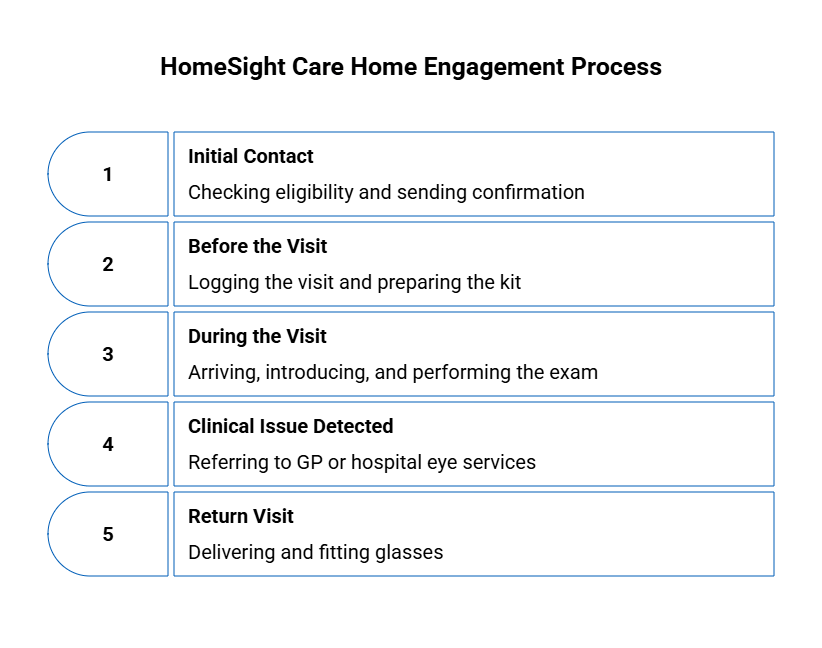Eye Tests in Care homes
All Homesight’s visiting opticians are experienced in conducting eye tests in care homes and sheltered accommodation. They are all fully qualified and sensitive to the specific needs of the residents who call it home. The dedicated staff who, like us, deliver day to day care and professionalism to elderly, regardless of their age or condition.
Like you, we care and understand the management of a care home venue can be challenging. We are here to help.
Whether you are looking for an eye test for a new resident, wish to discuss a patients eye health or need advise on a residents eye site, HomeSight are here to help you.
Call us now on 0800 080 6095 or complete the form below and we’ll be in touch.

1. Initial Contact
Step 1: Eligibility Check
Assess whether the care home and its residents meet the criteria for HomeSight services.
Step 2: Initial Contact & Email Outreach
Reach out via email to inform them of our upcoming visit. Attach the resident consent form and service overview for completion.
Step 3: Receive Consent Forms & Bed List
Collect the completed consent forms and updated bed list from the care home team.
Step 4: Internal Confirmation
Send a confirmation email with visit details to the care home.
2. Before the Visit
Step 5: Schedule Booking
Log and confirm the care home visit in our internal system.
Step 6: Pre-Visit Preparation
The optometrist prepares the portable eye-examination kit and supporting materials.
3. During the Visit
The HomeSight team arrives, introduces themselves to staff and residents, and sets up equipment.
Step 8: Consent Verification & Comfort Check
Reconfirm consent with each resident, explain the procedure, and ensure comfort.
Step 9: Vision & Medical History Review
Review relevant vision and medical history for each resident.
Step 10: Eye Examination
Conduct a thorough eye examination using our portable equipment.
Step 11: Examination Review
Discuss findings with the resident and/or care team.
Step 12: Frame Selection & Measurements
Assist with frame selection and take necessary measurements for prescriptions.
4. Clinical Issue Detected
If any clinical issue is detected during the exam (e.g., cataract, glaucoma, macular degeneration, diabetic retinopathy), the optometrist:
- Prepares a GOS 18 or electronic referral letter with history and findings.
- Sends the referral via the approved route (GP, HES, or Referral Management Centre).
5. Return Visit
Step 13: Delivery & Fitting
Deliver the completed glasses on-site, ensure a proper fit, and make any necessary adjustments at no extra charge.

